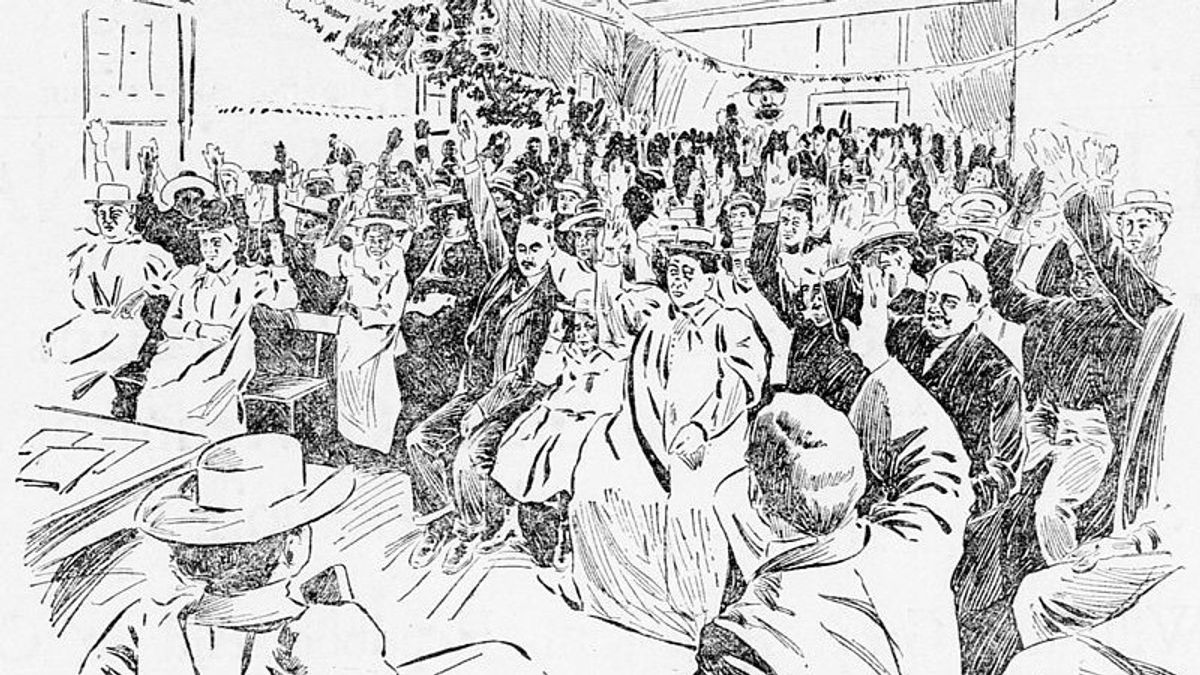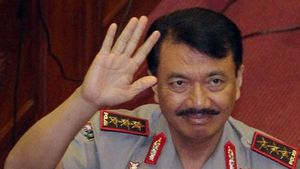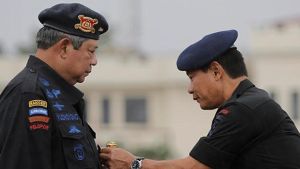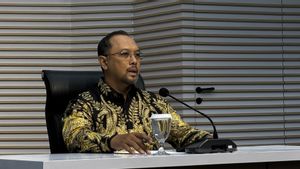JAKARTA - On June 16, 1897, United States (US) President William McKinley and three representatives of the government of the Republic of Hawaii, Lorrin Thurston, Francis Hatch, and William Kinney signed an annexation agreement. President McKinley then submitted the treaty to the US Senate for ratification.
Prior to the annexation, Hawaii was ruled by a monarchical system. Hawaii is ruled by a queen, namely Queen Lili'uokalani.
But the previous government, led by his brother, King David Kalakaua (1874-1891) continued to clash with US and European businessmen. These entrepreneurs do business in Hawaii, mainly in the agricultural industry.
In the late 1890s, non-native white farmers and businessmen took control of most of the land belonging to the Hawaiian people. Citing the Encyclopedia, King Kalakaua's main goal is to preserve Hawaiian culture, which goes against US and European goals.
Hawaii's economy is increasingly relying on trade with the US. Trade agreements eventually helped sugarcane plantation owners dominate the local economy and national politics. Seeing King David Kalakaua as dishonest, unreliable, anti-American, and wanting huge tariffs removed from sugar sales, a group of US and European businessmen confronted the king with armed militias.
A new constitution was implemented. Bayonet Constitution, the name. The constitution was signed by King Kalakaua, which was against his will.
The Bayonet Constitution limited the king's governmental authority, concentrated power on wealthy white landowners and removed many of the rights of Native Hawaiians. When Queen Lili'uokalani accepted leadership of her country after her brother's death, she attempted to return power to the native Hawaiians.

He also seeks to continue friendly relations with American and European business and political leaders. However, on January 16–17, 1893, a group of American sugarcane farmers and their businessmen, along with the assistance of the US Secretary of Hawaii John Stevens and the US Marines, Boston, overthrew Lili'uokalani.
The overthrow of Lili'uokalani was tantamount to overthrowing the monarchy. They then set up a new government led by Sanford Ballard Dole, a lawyer, judge, and former adviser to the king, also known as the US sugar barn.
Without approval from the US State Department, John Stevens recognized the new government and declared Hawaii a US protectorate on February 1, 1893. It was Queen Lili'uokalani who did not stand by the overthrow.
Quoting Tirto, Queen Lili'uokalani visited the then US President, Grover Claveland. But it doesn't change anything and only gives disappointment.
“When Grover Claveland learned that the majority of Hawaiians were against the coup, he opposed annexation and asked for the Queen's position to be restored. Dole and his interim government ignored him; in 1894 they proclaimed the Independent Republic of Hawaii. Lili'uokalani protested in vain to the United States and Britain but she was ignored; the new republic was recognized by foreign countries,” wrote Claudia Gold in Queen, Empress, and Concubine (2010).
The queen also had time to plot a rebellion in Hawaii. But his action failed and instead put him under house arrest. It is housed in the former Royal Palace of Hawaii.
Queen Lili'uokalani was also forced to recognize Sanford Dole as Hawaii's head of state. Finally on June 16, 1897, the annexation treaty was signed and in 1898 Hawaii was officially "annexed" to the United States.
Sanford Dole, previously head of state, later became the first American Governor of Hawaii. In 1959, Hawaii became the 50th US state.
Hawaiian StateAccording to the Britannica, Hawaii ranks relatively low among US states in terms of personal income, agricultural products sold, value of manufacturing shipments, retail sales, and bank deposits. Mostly because of its dependence on imports.
Hawaii has a high cost of living. As Hawaii's population increased, housing became increasingly difficult to obtain and very expensive compared to housing costs in many mainland states.
Most of the imported building materials are expensive. In 2020, Hawaii had the highest unemployment rate.
The unemployment rate rose to heartbreaking numbers following the shutdown orders issued by local authorities in March 2020 due to COVID-19. In addition to business closures and restrictions on large gatherings across the country, Hawaii was also the first state to require out-of-state travelers to be quarantined upon arrival.
This, combined with public concerns over aviation safety, crippled Hawaii's tourism-dependent economy. Honolulu's Daniel K. Inouye International Airport looks empty. Many shops were closed and public speeches announced directing people to be quarantined.
*Read other information about WORLD HISTORY or read other interesting articles from Putri Ainur Islam.
TODAY'S HISTORY MoreThe English, Chinese, Japanese, Arabic, and French versions are automatically generated by the AI. So there may still be inaccuracies in translating, please always see Indonesian as our main language. (system supported by DigitalSiber.id)










